Investigating and speculating on the future of social and cultural spaces requires considering physical spaces in combination with digital media networks, emphasizing the hybrid qualities of spaces in the interplay of the digital and the physical.
Publication Hybrid Spaces @ Regeneration [and its Discontents], Lithuanian Architectural Foundation, Vilnius, Lithuania, 4 June 2021
Hybrid
Space
The ways people around the world communicate and connect is being radically redefined by digitalisation. Therefore, investigating and speculating on the future of social and cultural spaces requires considering physical spaces in combination with digital media networks, emphasizing the hybrid qualities of spaces in the interplay of the digital and the physical. With the COVID-19 pandemic, the use of digital instruments witnessed an unprecedented rise of hybrid (combined physical-digital) forms of socialising and working, pushing us further towards hybrid living. Today, hybrid space is becoming the predominant space for social interaction.
After the lifting of pandemic-induced physical distancing, the hybrid nature of everyday life is even more undeniable as these newly acquired habits – backed by economic interests – remained, became the new normality, while digital and hybrid formats continued to quickly evolve.
With the strong, partly unquestioned and unreflective acceleration of these technological developments, it is urgent to take a moment to pause and critically reflect. As we witness the seemingly unstoppable proliferation of hybrid formats, it is necessary to investigate what it means to co-create and experience meaningful social interactions in the time of hybrid space, as well as envision socially inclusive and engaging hybrid spaces. As our habitat is becoming hybrid, it is crucial to influence developments by “inhabiting technology” – approaching technological developments from the perspective of the urbanist-architect-designer and transforming these technological developments to meet the way we want to live.
Art and culture provide the most malleable sources, pulsating with the potential for transformation in multiple dimensions. Tapping into the creative potential in the fields of cultural production, artistic speculation and vision allows us to address these challenges and think again about social interactions through the lens of hybrid space.
Hybrid space has been the focus of Hybrid Space Lab’s long-term commitment and experience in researching and developing space. Starting with the fusion of physical places and digital networks into ‘hybrid’ spaces, the Lab’s concept of hybridity evolved to address the hybrid, intertwined realities of nature and technology, along with the fusion of the biological and technological.
The hybridisation between the digital and the analogue demands a transdisciplinary approach. We experienced that digitalisation causes similar transformations to very different fields, for example, supporting decentralised systems for co-creative processes. This led to the development of a crossover method, a hybrid strategy of mixing fields to investigate, explore and apprehend the multiple networked dimensions of space. Aiming towards an enhanced sophistication of methods to capture this expanding field, ‘hybrid’ developed into a versatile strategy of cross-innovation that allows us to address the urban, the natural and the digital in an integrated way.
The ways people around the world communicate and connect is being radically redefined by digitalisation. Therefore, investigating and speculating on the future of social and cultural spaces requires considering physical spaces in combination with digital media networks, emphasizing the hybrid qualities of spaces in the interplay of the digital and the physical. With the COVID-19 pandemic, the use of digital instruments witnessed an unprecedented rise of hybrid (combined physical-digital) forms of socialising and working, pushing us further towards hybrid living. Today, hybrid space is becoming the predominant space for social interaction.
After the lifting of pandemic-induced physical distancing, the hybrid nature of everyday life is even more undeniable as these newly acquired habits – backed by economic interests – remained, became the new normality, while digital and hybrid formats continued to quickly evolve.
With the strong, partly unquestioned and unreflective acceleration of these technological developments, it is urgent to take a moment to pause and critically reflect. As we witness the seemingly unstoppable proliferation of hybrid formats, it is necessary to investigate what it means to co-create and experience meaningful social interactions in the time of hybrid space, as well as envision socially inclusive and engaging hybrid spaces. As our habitat is becoming hybrid, it is crucial to influence developments by “inhabiting technology” – approaching technological developments from the perspective of the urbanist-architect-designer and transforming these technological developments to meet the way we want to live.
Art and culture provide the most malleable sources, pulsating with the potential for transformation in multiple dimensions. Tapping into the creative potential in the fields of cultural production, artistic speculation and vision allows us to address these challenges and think again about social interactions through the lens of hybrid space.
Hybrid space has been the focus of Hybrid Space Lab’s long-term commitment and experience in researching and developing space. Starting with the fusion of physical places and digital networks into ‘hybrid’ spaces, the Lab’s concept of hybridity evolved to address the hybrid, intertwined realities of nature and technology, along with the fusion of the biological and technological.
The hybridisation between the digital and the analogue demands a transdisciplinary approach. We experienced that digitalisation causes similar transformations to very different fields, for example, supporting decentralised systems for co-creative processes. This led to the development of a crossover method, a hybrid strategy of mixing fields to investigate, explore and apprehend the multiple networked dimensions of space. Aiming towards an enhanced sophistication of methods to capture this expanding field, ‘hybrid’ developed into a versatile strategy of cross-innovation that allows us to address the urban, the natural and the digital in an integrated way.
By endorsing such a hybrid approach, it is possible to appreciate the interconnected and blurring realities of the city, nature and technology. In fact, it is increasingly apparent that such a hybrid strategy is appropriate to engage with the complexity of today’s globalised world. By enabling mutual contamination and enrichment across fields of knowledge and practices, such an approach of taking ideas from one field and applying them in another, (thus reframing challenges in order to approach them from a new perspective) allows for previously unthought-of solutions to rethink paradigms anew.
By endorsing such a hybrid approach, it is possible to appreciate the interconnected and blurring realities of the city, nature and technology. In fact, it is increasingly apparent that such a hybrid strategy is appropriate to engage with the complexity of today’s globalised world. By enabling mutual contamination and enrichment across fields of knowledge and practices, such an approach of taking ideas from one field and applying them in another, (thus reframing challenges in order to approach them from a new perspective) allows for previously unthought-of solutions to rethink paradigms anew.
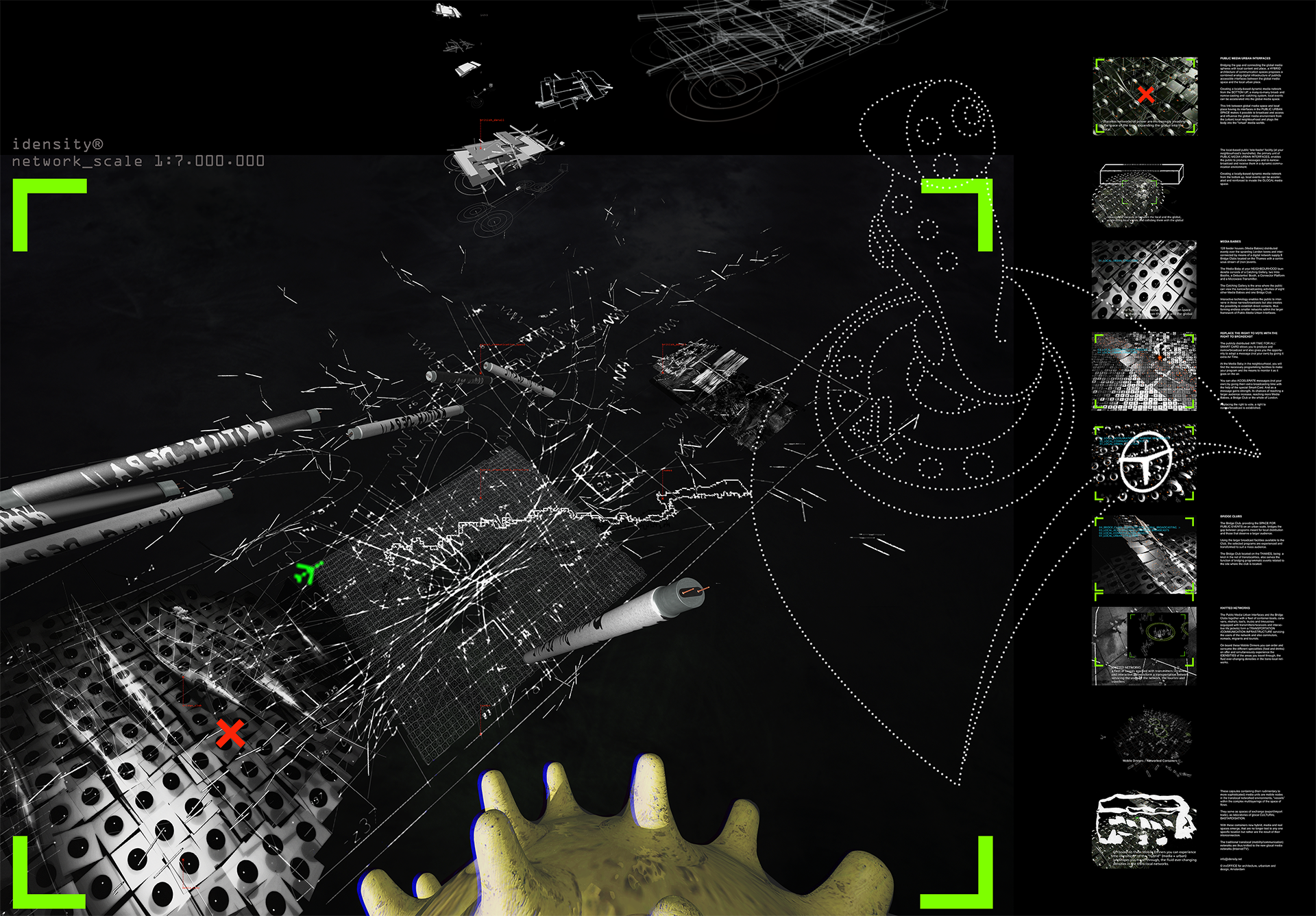
Communicational
Approach
With its mission to inform on “the changes in society and governance due to the digital revolution”, the Dutch government’s interdisciplinary think tank “Infodrome” invited us in 1999 to investigate “The Use of Space in the Information Age”. By adding the subtitle “Processing the Unplannable” to our survey, we programmatically expanded our research from “Infodrome’s” sole focus on ‘informational’ data-related aspects of the “Information Era” to “The Use of Space in the Information-Communication Age”.
This programmatic emphasis on the communicational dimension of the digital revolution (that in 1999 nearly cost us the research assignment) was based on our awareness of the two very different traditions. On one hand, the approach borrowed from information technology, aiming for data-powered optimisation and efficiency of urban functions by supporting the collection of data from real-life phenomena. On the other hand, the approach informed by communication technologies that enhance the participation of city users and dwellers by cracking processes open and allowing for greater complexity, negotiation and formation of intelligent, creative collectives.
Optimization, such as the reduction of congestion or the improvement of air quality, valuably helps to address urban challenges. However, it is still important to question who the processes are optimised for and to bear in mind that the qualities of urbanity are based on the functional, social, cultural richness and complexity of cities, as are their inherent, ongoing negotiations.
Smart City – the notion summarising the coming together of the Urban Age with the Digital Era – is very much data-driven, mostly focusing on optimisations, efficiency and control. Nevertheless, enabling transitions from centralised to distributed interactive systems and networks, as well as supporting participatory social processes, is an inherent feature of digitalisation. Therefore, the urbanisation of technology should be more transparent, engaging citizens in participatory processes of expert/user co-creation.
Social splintering, disruptive technologies, and the ‘permachange’ we are experiencing demand spaces where society can process the transformations caused by technological developments. Throughout the years, we have been developing a series of these hybrid process-spaces, such as the City Making Lab in Berlin.
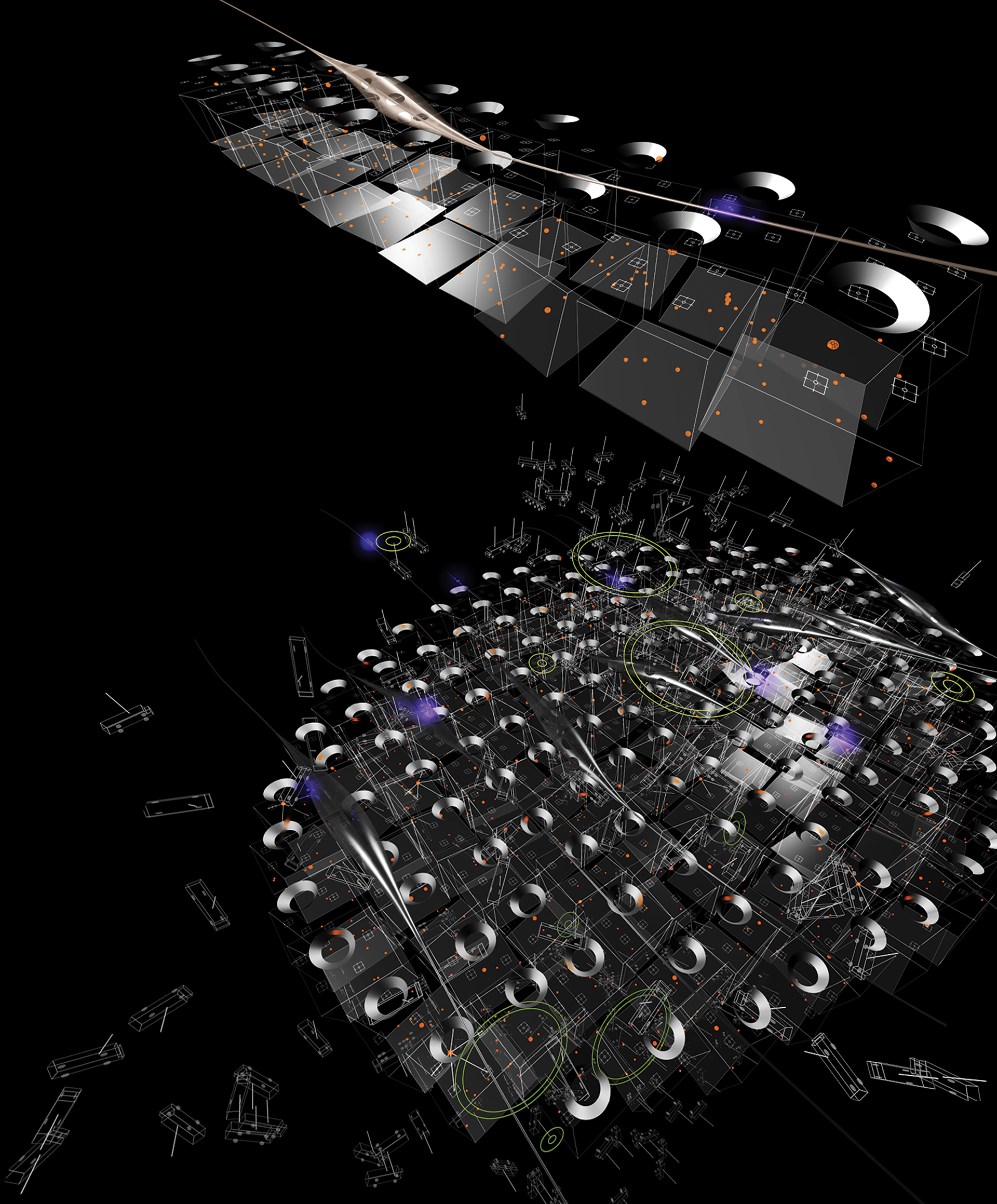
Public
Media
Urban
Interfaces
Our early work in the late 1980s was deeply rooted in this communicational approach, as we approached the city as a space of encounter, exchange and negotiation. We developed artistic projects for urban participation, speculating about how our lives and the physical urban space would be transformed by the emerging Internet and digital networks. At this point, technology was just hatching and its applications were not yet established – these were times open for imagination. With great freedom, we envisioned possible future public hybrid spaces, developing artistic visions of a combined urban and media public space with the locally embedded, bottom-up public network of “Public Media Urban Interfaces”: a publicly accessible interface between the global media space and the local urban place.
The project “Public Media Urban Interfaces” envisioned alternative scenarios for the interplay of digital networks in order to reinforce the function of public urban and public media space. It developed models that enabled bottom-up active participation for all city dwellers in global media culture. The demo project exploited London’s urban tensions and structure, advancing an alternative Internet protocol that strengthened the local as a starting point of globalised, mediatised cultures.
With an Air-Time-For-All-Smart-Card, at the location of their local low-tech broadcasting studio – for example, the neighbourhood’s launderette – all citizens were enabled to produce messages and narrow-cast them locally within the neighbourhood. If they did not wish to produce their own message, citizens could give their Air-Time to another message from their neighbourhood, accelerating its broadcast even beyond their direct local surroundings. This reinforced local broadcasts to temporarily invade the global media space (to a greater or lesser extent), creating a locally based dynamic media network from the bottom up.
“Public Media Urban Interfaces” made it possible for everyone to broadcast, access and influence the global media environment from the urban local neighbourhood. In its design for a public hybrid urban space, the project proposed a bottom-up public network that combined and connected urban public space with media public space.
With “Public Media Urban Interfaces” we envisioned and created our own ‘MetaWorld’ that throughout the years has been the main source from which we have developed ideas and artistic concepts, all projects described below having their roots in this MetaWorld. “Public Media Urban Interfaces” provided us also with the opportunity and framework to develop new artistic expressions with dynamic notations as tools for coding hybrid process-spaces.
Moreover, the project draws on one of the main features of digital transformation, namely enabling the move in favour of distributive interactive systems from centralised ones, fostering wider participatory processes. The “YOU-topia” approach was therefore already inscribed in “Public Media Urban Interfaces”, putting the emphasis on YOUR space (topos), on the Space of the Other, juxtaposed to closed utopian models.
Soft
Urbanism
The project also served as a conceptual-programmatic framework for developing new approaches to urbanism, such as Soft Urbanism: an interdisciplinary field of planning and design, exploring the dynamic interplay of urbanism, digital media spaces and communication networks. Coining the term “Soft Urbanism” in the early 1990s, we developed an urbanistic approach that considers and deals with both urban and media spaces in an integrated way.
With its topological understanding of urban phenomena, “Soft Urbanism” addresses the interrelated spatial dimensions, enabling a more integrated and structural understanding of the networks of spaces for social interaction. This approach is communicational and adopts the network-paradigm, creating frameworks for processes of self-organisation that focus on the bottom-up processes of city dwellers and users – placing emphasis on the Space of the Other.
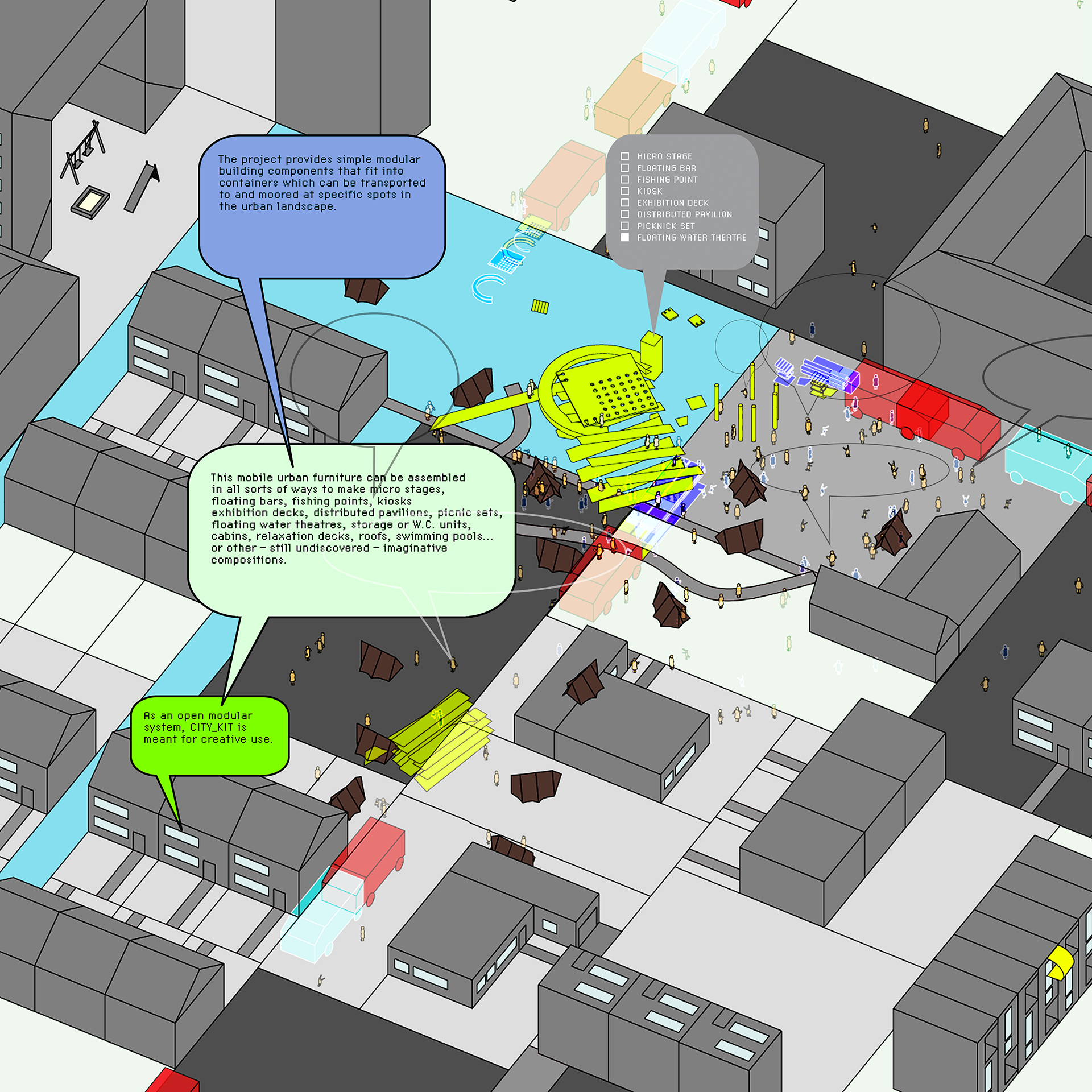
Idensity
To understand the fusions, superimpositions and interactions of media and physical/urban spaces, we introduced the new term ‘idensity’ with our aforementioned research on “The Use of Space”’. Fusing the notions of “identity” and “density of connections”, ‘idensity’ does not differentiate between media networks and urban-architectural environments, instead offering an integrated model for dealing with hybrid space.
In the contradictory dynamics of the urban environment – with its antithetical tendencies of concentration and decentralisation, of functional mix and segregation – traditional terms of spatial distinction lose their validity. Categories like ‘functional zoning’ (living, working, recreation), ‘centre’ versus ‘periphery,’ ‘landscape’ versus ‘city’, are becoming obsolete. The polarity between private and public space is disintegrating as public and private environments are intermingling and blurring in the fusion of media and physical space.
‘Idensity’ integrates the concept of ‘density’ (density of connections, density of physical and digital infrastructure, density of communication-spaces in general) with the concept of ‘identity’ (including image policies and urban brands). Therefore, as an example, it can help us to understand processes of spatial segregation and distinction between urban fragments that have qualities of global performance and are considered as part of a ‘global urban condition’, and those other, sometimes neighbouring (parts of) cities that lose relevance and disappear from (global) mental maps.
The term ‘idensity’ carries the discussion on the urban from the morphological level of a formal description for the network patterns of the (network) city to a more integrated, structural understanding of the networks of spaces for social communication. It is a conceptual instrument for researching and developing space in the information-communication age and can be implemented as an operative tool to steer processes of urban development.
‘Idensity’ does not only refer to object-qualities but describes a field of superimposed communication spaces and embeds identity in the context of communication. Therefore, it is not just a mere summation of the two concepts of ‘density’ and ‘identity’, but a fusion. It inverts ‘identity,’ linking it to communication so that ‘identity’ is defined by connectivity.
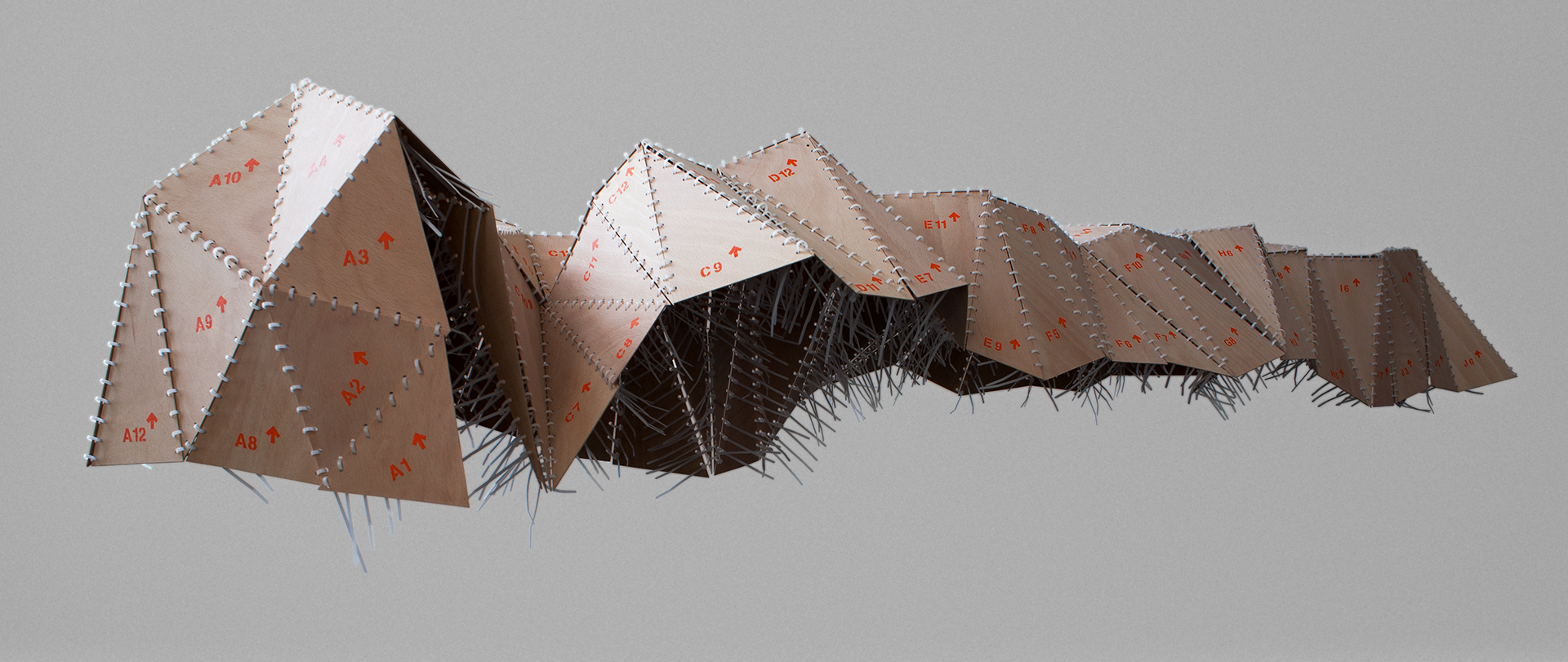
City Kit
&
DIY Pavilion
A series of projects illustrate the Soft Urbanism approach with its dynamic interplay of urbanism, digital communication networks as well as the ‘idensity’ methodologies of augmenting urban densities by increasing the frequency of exchange and negotiation. Since our starting point has always been conceptual, not technological, a central theme in our work throughout the years has been empowering the user, for example, with the “City Kit” project developed for the Hong Kong Social Housing Authority in 2007, where our target group were young people who were familiar with computer games, but hardly played outside.
As space is extremely scarce in Hong Kong, the “City Kit” hybrid game enables children and young adults to design temporary playgrounds in urban spaces. Using modular building components that can be moved around and fixed in certain places of the cityscape, residents can build micro stages, bars, exhibition decks, pavilions, picnic sets and other structures that make living in the neighbourhood more fun.
The outcome of “City Kit” was the “DIY Pavilion”. A digitally supported architectural design method relying on triangulation made it possible to involve users in its design, building and transformation. “DIY Pavilion” was first presented at the waterfront promenade of Hong Kong within the framework of the Hong Kong & Shenzhen Bi-city Biennial of Urbanism and Architecture 2009-2010. The work later travelled to different locations in Hong Kong and Shenzhen for community education purposes.
Based on an architectural design principle with a flexible, adaptable structure, the pavilion can be easily disassembled, transported, reassembled and sown together again, adjusting to the size of the site and the local requirements. It is a low cost and low-tech construction of triangular plywood plates, sown together with the help of cable binders.
Consisting of self-supporting triangular elements, the pavilion’s covering provides structural integrity and a strong, crystalline formal expression. As a DIY, evolutionary, open-design modular building, the pavilion is adaptive in both time and space – a participatory design and co-creative process space.
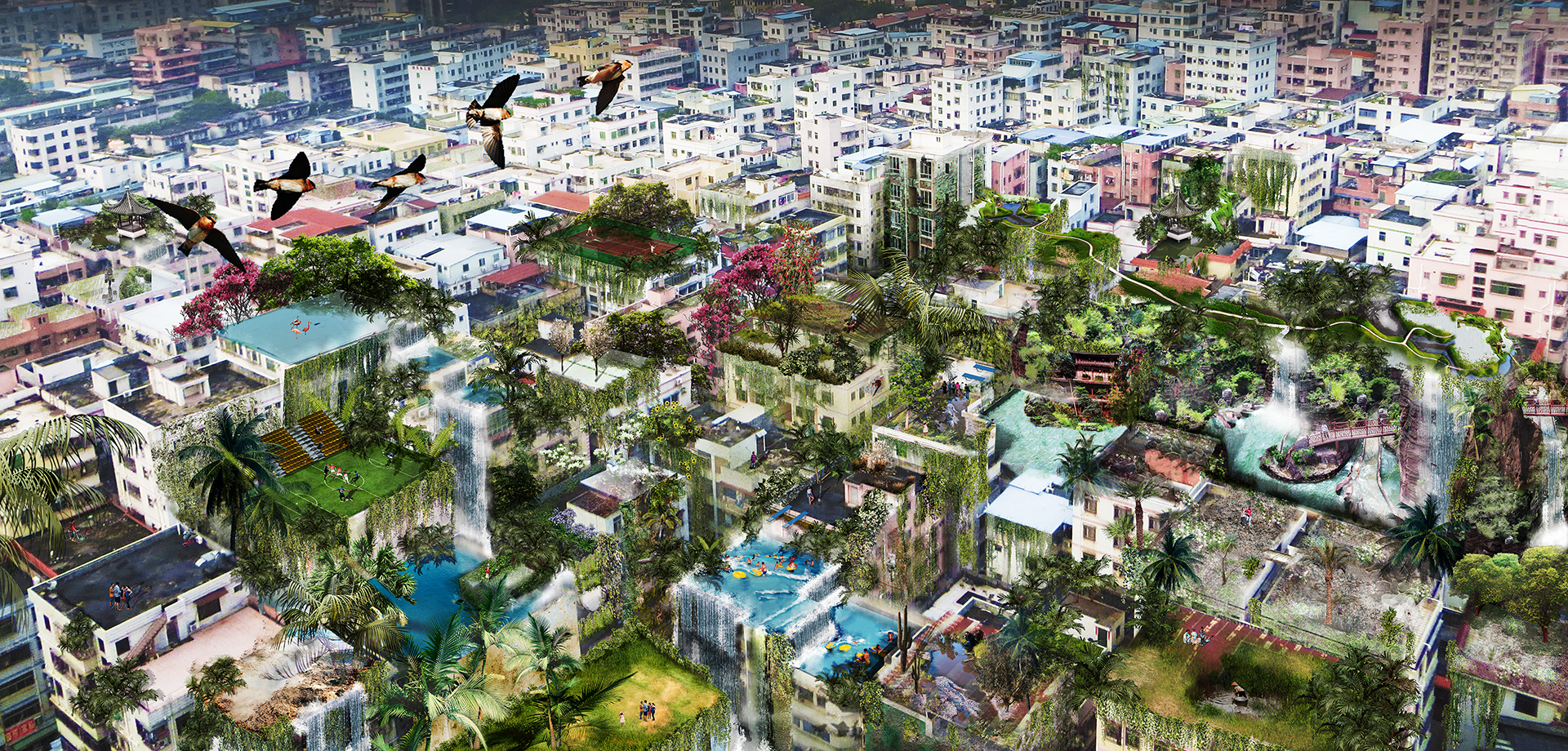
INbetweenSTITUTE
Drawing on the Soft Urbanism and ‘idensity’ approaches and methods, in the assignment for the re-development of the Beijing 798 Art District, we again emphasised communication spaces, designing process spaces, and offering an integrated model for dealing with hybrid (media and physical) space.
For years, the Beijing 798 Creative Zone had been the main Chinese art district, with museums, galleries, artists, and designers’ studios occupying an old factory area. Increasingly, the 798 District was becoming a tourist destination, its popular success growingly eroding its exclusive image. In 2014, we were invited to propose a new brand and museum facilities for the district. We convinced Beijing officials to not think in brands but to think in processes and communication spaces. Instead of a mono-functional fixed identity (an artificial “New Brand”), we proposed a process-oriented strategy for strengthening creative artist networks, anchoring them into 798’s urban tissue.
We also designed a new typology: the “INbetweenSTITUTE”. This was an infrastructure for co-creating and involving the public, as well as a space between the private space of artistic creation (ateliers and studios) and the public spaces of the audience (public showcases, museums, galleries, theatres and concert halls).
“INbetweenSTITUTE” introduced facilities for hybrid (combined on-site and online) co-creation with creative labs working with cross-over innovation methods on issues relevant to society. The project also developed a hybrid modular and mobile system to penetrate other areas of the city, involving citizens in urban co-curation.
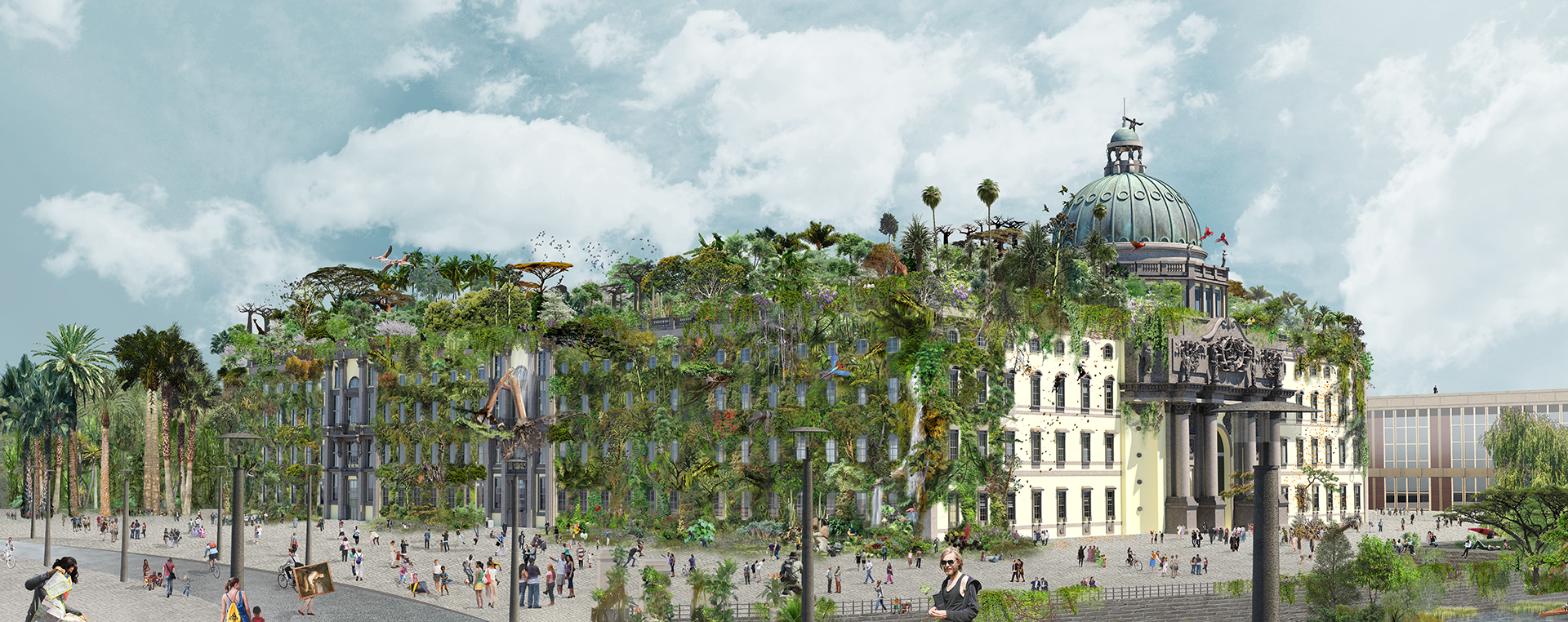
NatureTecture
Co-creating the city was also the core of the work we developed for the Athens Municipality in 2015. As a participatory climate adaptation project for integrating greenery into Athens’ built environment with the help of bottom-up processes, “Poly Garden City” considers the whole city as a canvas for ‘greening’, with vegetable gardens on balconies, gardens in the spaces between buildings, green rooftops with endemic plants, and lively green terraces.
“Poly” stands for the multitudes of the city. “Garden” (‘gardening’) can be interpreted in a very broad and metaphoric sense, being connected to existential dimensions and to post-materialism, and ‘gardening’ in an urban context requires the encountering, exchange and negotiating with neighbors and other city users, engendering processes of community building.
The climate adaptation strategy of “Poly Garden City” is very relevant for cities in the the ‘flat roof region’ – especially because in these areas processes of informal urbanisation have produced settlements with very little or no space for urban green. This approach was developed further in another case study, the Shenzhen Urban Village.
“Urban Garden Kit” is a hybrid (combined computer and urban) game for the Urban Village’s extremely densely built environment: a hybrid platform for exchange between different groups, focusing on local knowledge, oral history, and endemic plants and their use. This participatory platform bridges experts and users of the urban environment, turning city-users into “city-makers and -gardeners.” By expanding the “City Kit” game to integrate urban nature, “Urban Garden Kit” reinterprets the city by fusing buildings and gardens into new hybrid urban typologies.
Such a participatory hybrid environment is an example of how urban-architectural spaces, nature, and the digital can be developed together in an integrated way, addressing the hybrid realities that include the biological and the technological. In the Anthropocene, the juxtaposition between nature versus artifact and designed environment is becoming obsolete. So instead, we pursued a new hybrid field of design where architecture and nature fuse: NatureTecture!
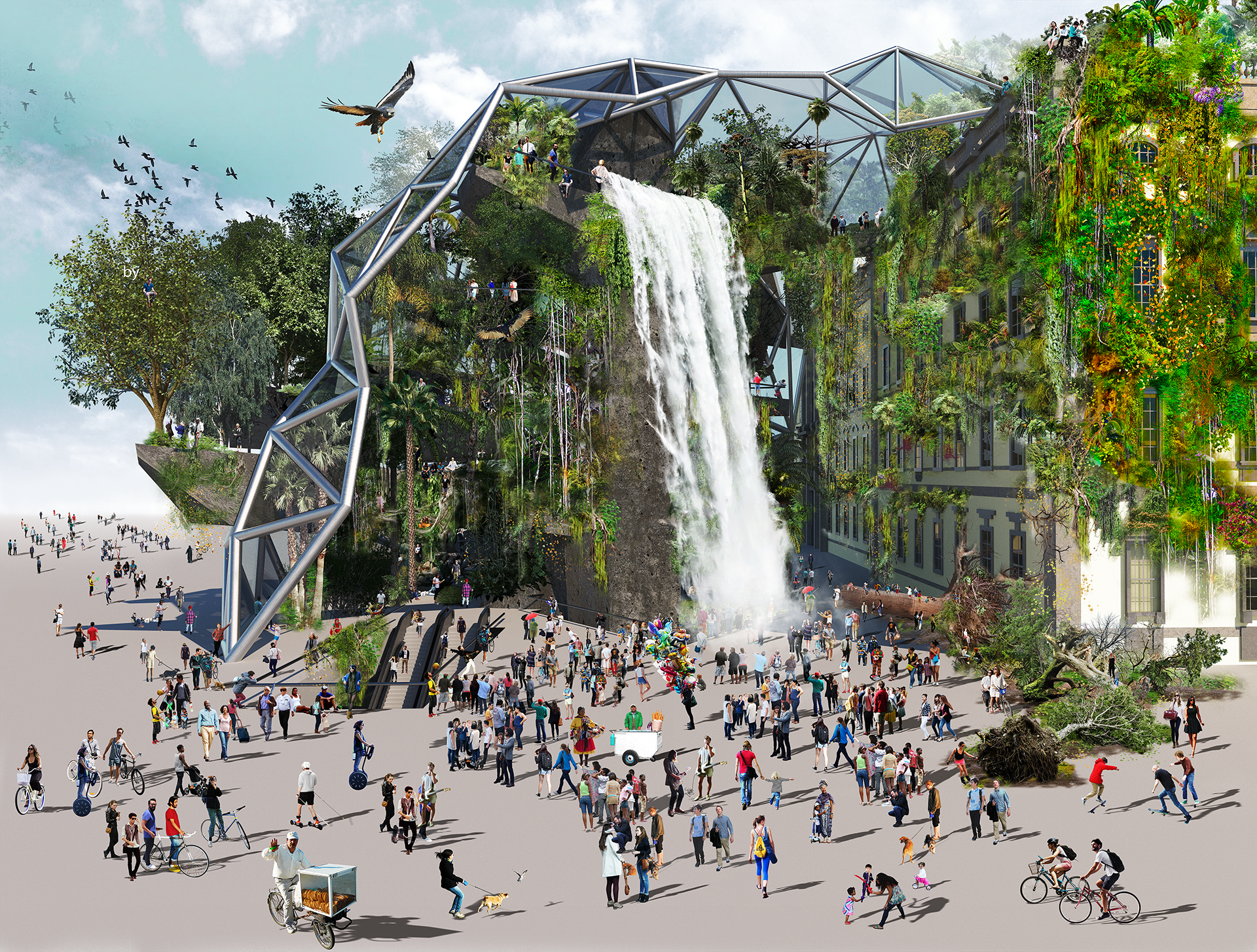
Humboldt Jungle
&
Humboldt Volcano
Facing the Urban Age’s crises such as climate change and biodiversity loss, we need a transdisciplinary design approach to address the interconnected challenges of today. We need to rethink the juxtaposition of nature versus artifact by integrating plant material in our architectural surroundings and merging nature with the built environment. In this convergence of architecture and nature, new hybrid architectural solutions emerge, such as our projects “Humboldt Jungle” and “Humboldt Volcano” for the Humboldt Forum in the city centre of Berlin.
Behind the replica of a baroque palace façade, the Humboldt Forum developes as a cultural centre of international renown with the Berlin ethnographic collections and a space dedicated to the “Global Dialogue of Cultures”. The German government is rebuilding the exterior of the demolished Kaisers’ imperial palace to house the venue. The Forum takes its name from the Humboldt brothers: scientist Wilhelm von Humboldt, who founded the Berlin University; and explorer Alexander von Humboldt, who was actually not so fond of the Prussian state.
The palace of the Prussian imperial family once stood where the Humboldt Forum is currently being built. The former was bombed during World War II and subsequently demolished by the DDR regime to build a “Palace of the Republic” in its place (also demolished after the German reunification). Therefore, the Humboldt Forum stirs heated debates, as it involves issues of national symbols, the international role of the city and supranational cultural networks.
In 2015, the funds needed for the Humboldt Forum façade were still missing and because of this, consultations for alternative proposals remained open. As an alternative to the palace’s baroque façade replica, we proposed to wrap the building with a luscious vertical green: a “Humboldt Jungle”, referring to the jungle explorer and sustainability pioneer Alexander von Humboldt and giving a more extrovert, more contemporary and more environmentally friendly form to the Humboldt Forum building.
As the Humboldt Forum’s stone façade was being built, in the same spirit and NatureTecture-approach of fusing buildings and nature, we developed a further proposal: “Humboldt Volcano”, an extension of the Forum as a greenhouse-pavilion with a vertical tropical garden and a waterfall, again referring to Alexander von Humboldt’s volcano explorations and discoveries of exotic flora.
Our radical “Humboldt Jungle” proposal was embraced enthusiastically by the cultural world and the press, as the “rescue of the Humboldt Forum”. Also, the “Humboldt Volcano” enabling the appropriation of the Humboldt Forum and opening it up to the city was very well received and is now in discussion in Berlin politics. Even the popular tabloid press was very passionate in their promotion. A special quality of the projects is that they bridge the dichotomy between avant-garde artistic expression – otherwise exclusive by definition – and an inclusive approach to culture. By allowing different depths of readings of their multi-layered complexity by different groups, the projects stand for an approach that fuses low and high culture, vanguard and folk, mainstream and niche – a Hybrid Culture.
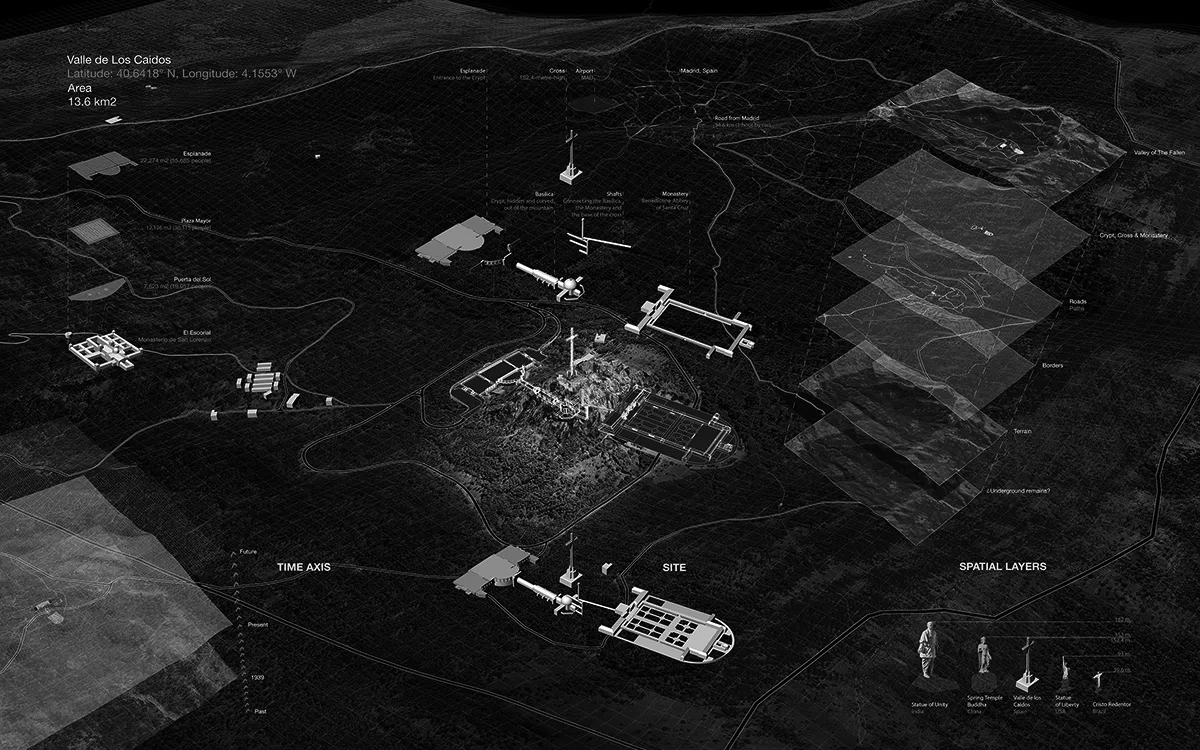
Deep
Space
The above-mentioned projects convey the sense that creativity can create opportunities in heated public debates which would otherwise come to a standstill. Our recent work and current project on Valle de los Caídos continues along this breakthrough, as we examine how conflictual monuments and heritage can be transformed using creative and digital tools.
The Francoist monumental memorial for the Fallen of the Spanish Civil War hosts the remains of more than 33,000 victims from both sides of the Spanish conflict, removed from mass-graves around the country unbeknownst to the victims’ families. Until 2019, it was also the burial site of Francisco Franco himself. Built between 1940 and 1959, the monument comprises a 260-meter-long basilica carved inside the granite mountain, partly realised through the forced labour of republican political prisoners. It is the most controversial active monument in the world, as the Benedictine monks celebrate mass daily, and before Franco’s exhumation in 2019, did so at his grave and in his honour. To this day, visitors to the monument, which continues to function as a tourist destination, have no information about its complex, controversial history.
With the “Deep Space: Resignifying Valle de los Caídos” workshop-project in 2018, we developed the concept of transforming the monument using artistic digital means without physically changing it. This digital strategy was very well received in Spain and internationally, as it opened up new paths for dealing with historically problematic monuments as an alternative to the two options of acceptance without comment or destruction.
The project is a case-study on the reinterpretation and transformation of historically loaded and controversial monuments/memory sites with the help of digital tools. As we are currently witnessing a surge of iconoclastic actions against monuments glorifying exploitative and unresolved history worldwide, it is urgent to develop inclusive tools and methods to reckon with these testimonies of controversial pasts and their open historical wounds.
The project pioneers the development of new methods and digital tools for re-signifying and transforming controversial physical monuments and sites. Such digital tools are especially relevant for the re-signification of large-scale physical sites of memory – in the scale of landscapes (such as at Valle de los Caídos) and in the urban scale. This approach allows for the inclusive re-reading of larger territories; for example, urban settlements under a post-colonial perspective.
We are now developing an Augmented Reality application, through which visitors will be able to explore the hidden layers of the monument’s controversial history and make “visible” the mass graves hidden behind the basilica’s sidewalls and the remains of the barracks where the forced laborers lived. This would help to reveal what Franco wanted to hide here, breaking the totalitarian narrative of the monument. The onsite presentation of its building history – with the help of an AR application – would make Valle de los Caídos a tangible testimony of Francoism, transforming it into a polyphonic memorial: an example for the resignification of controversial monuments in the Digital Age.
‘Augmenting’ physical memory sites into more polyphonic spaces is an important and urgent challenge today. It can inform the processing of other contested monuments/sites internationally, and thus be very relevant to the ongoing discourse of inclusive (memory) spaces and the urgent social need for inclusive heritage and memory-making. Hence, “Deep Space” kick-started an exploration for us, focusing on how future heritage sites could look, feel, and sound, and how their digitally enriched features could affect memory-making processes.
Reboot
Culture
Committed to a polyphonic (future) heritage, the “Reboot Culture” program is designed to permeate the city fabric with processes of cultural co-creation and reception by activating public space through the multiple voices composing the polyphonic city. Launched by Hybrid Space Lab in 2020, the international “Reboot Culture” program enables and supports new forms of hybrid (combined physical and media) staging of public cultural events, with a special focus on smaller cultural institutions in urban peripheries. It also aims at developing a strong symbolic momentum with hybrid public staging and renditions marking the rebooting of cultural programs in the post-pandemic city.
To support hybrid cultural formats and mobilise culture, the program weaves a sophisticated decentralised network of mobile media infrastructures with media-containers, media-busses, media-pontons and media-boats travelling via roads or waterways to cultural venues. Acting upon the commitment to the revitalisation and redesign of culture within- and post-COVID-19 urban landscapes, the “Reboot Culture” program envisions hybrid staging on an ambitious and evocative mega-scale, temporarily shaping public spaces by contemplating large, captivating hybrid cultural events alongside riversides and quays – whilst upkeeping the necessary measures of physical distancing.
By addressing the mega, medium and nano scales, “Reboot Culture” develops a nuanced, context-sensitive approach to cultural co-production and hybrid reception, integrating onsite features with the help of a mobile media infrastructure and an online digital platform.
Through focusing on the potential of hybrid formats to meaningfully activate culture in hybrid public space, the program embeds the rebooting of culture in the urban environment, drawing on the multiple voices and sounds of the polyphonic city. Recognising and upkeeping the value of public space, a strong emphasis is placed on the public nature of cultural practices and on the development of safe and public hybrid (combined media and physical) cultural spaces. With outdoor staging enabling the embedment of culture in the physical social urban environment, the program echoes our earlier projects on the interfaces between the public urban and the public media realms.
By following a strategy of permeating physical space and with a focus on small scale platforms in urban peripheries, the project aims to reformulate spatial cultural hierarchies. In this interplay of physical events and media networks, the project follows an ‘idensity’ approach, strengthening the densities of hybrid communication spaces, and a “Soft Urbanism” logic that considers and deals in an integrated way with both urban and media spaces for social interaction, creating platforms for self-organised bottom-up processes of urban, cultural co-creation.
Moving from cultural centres to the peripheries and bringing these experiences from the peripheries back to cultural centres via a connecting digital platform as a space of representation, the project aims to breakthrough the “bubbles” of highly personalised digital existences. With an emphasis on public urban space and its potential for serendipitous encounters, the program encourages encounters with the Other, following the YOU-topian approach that puts emphasis on YOUR space, the Space of the Other.
Hybridities
With its commitment to hybrid staging for the polyphonic city, the project celebrates cultural hybridity as a core feature of our contemporary condition in today’s globalized world. It also supports the further development of a co-created, multi-voiced, plural and heterogeneous hybrid culture.
Hybrid cultures, anchored to and embedded in physical spaces, are increasingly distributed, shaped and negotiated in trans-local media networks. As we reckon with hybrid cities merging digital spaces and networks that shape our relationships and the physical spaces for cohabitation and encounters, it is important to experiment with collective cultural experiences that combine public physical urban space and public digital space.
With digitalisation supporting hybridisation as a fusion of cultural creators and consumers (cultural co-creation), as well as the coming together of creative practices such as painting and sculpture, film, sound and interactive media within a single artistic project (post-medium art), hybridity is becoming central in artistic and cultural production.
More broadly, hybridity is a multifaceted notion, as we are experiencing a proliferation of hybridisations in all dimensions of our contemporary life. Our whole sense of reality is shaped by our hybrid existence – simultaneously online and offline, local and global, national and transnational, professional and layperson – as hybrid reality.
This questions classical ontological divisions between the physical and the digital, the human and the non-human, the natural and the artefact. Grappling with the first attempts to systemise the world in the times of the Aristotelian categories, the notion of the “hybrid”, the crossbreed, had a negative connotation. What we are experiencing today is a cultural shift away from such a mindset, based on binary logic and clear-cut categories and identities. Today, as we embrace our world in its complexities and interconnectedness , the notion of the “hybrid” is everywhere,.
By endorsing such a ‘hybrid’ approach, it is possible to appreciate the interconnected and blurring realities of nature and technology. In fact, it is increasingly apparent that such a strategy is appropriate to engage with the complexity of today’s globalised world. Affecting all areas, hybridity is an approach addressing today’s interconnected challenges, integrating multiple perspectives in a transdisciplinary way. In this time of major shifts, challenges and upheavals, it becomes pressing to radically rethink culture as well as humans’ relationship with nature in tune with the Anthropocene.
With the contemporary cultural shift and paradigm change, the focus readjusts away from divisions and boundaries to interconnections and networks. With the aforementioned concept of ‘idensity’, identity is being defined by connectivity in a field of superimposed communication spaces, embedding identity in the context of communication. We define ‘idensity of the urbanite’ as the density of the interplay between hybrid communication spaces – emphasising our interconnectivity and interdependence.
Architektūros fondas is a non-governmental, non-profit organisation, bringing together a network of people, initiatives and ideas, expanding the public’s understanding of architecture, and applying theoretical and practical architectural competences in a wide range of fields. The flexible, open and proactive structure of the organisation helps to adapt to changing needs and circumstances, while the dynamic arrangement of the community is supported by the principles of volunteering and sharing. While actively working in Lithuania, Architektūros fondas is continuously expand and strengthen our cooperation with foreign experts and institutions, and implement projects internationally.
related PROJECTS
related PRESS
